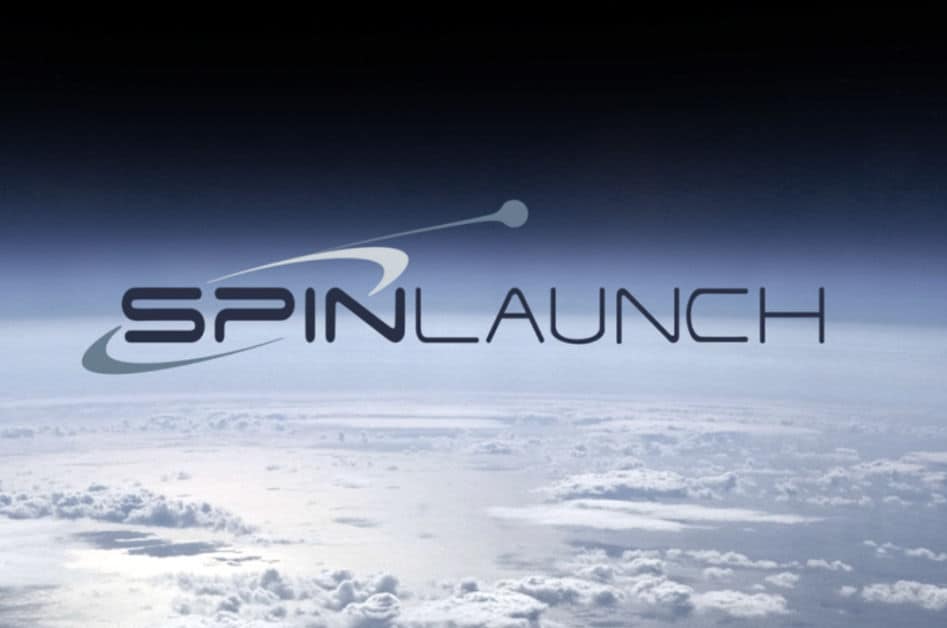By Kevin Robinson-Avila for the Albuquerque Journal
Spaceport America’s newest tenant is building technology that could literally fling rockets into space.
California-based SpinLaunch Inc. has developed a novel centrifuge system that rapidly spins a vehicle around on the ground until it reaches hypersonic speeds. It then releases the rocket like a catapult to hurl to the edge of space.
It’s a cutting-edge concept that, if successful, could radically change the way small satellites are launched in the near future. It could cut expenses to a fraction of today’s costs as the world prepares to place tens of thousands of tiny, shoebox-sized “cubesats” into low Earth orbit.
All the testing will now be done at Spaceport America in southern New Mexico near Upham, about 50 miles north of Las Cruces. The company will break ground today on a $7 million, 10,000-square-foot test facility there, SpinLaunch founder and CEO Jonathan Yaney told the Journal. It will also invest about $1 million in infrastructure, including a new access road, support buildings and an off-grid solar electrical system to power its facilities.
“We’re building a unique, different type of space launch system,” Yaney said. “The spaceport provides the environment and conditions we need to mature our technology and bring it online.”
The company has gained a lot of traction since launching in fall 2014. It’s raised about $40 million to build its technology, including a $35 million round of venture investment it closed on in June from Airbus Ventures, Kleiner Perkins, and Google Ventures, now called GV.
That money allowed SpinLaunch to move from a small incubation space in Silicon Valley to a 140,000-square-foot test and manufacturing facility in Long Beach, Ca., where it’s now based. It also paved the way to locate its test center at Spaceport America, which Yaney said is ideal for a startup like SpinLaunch.
“Spaceport America is conducive and inviting to small startup businesses like ours, because they understand that our needs are different from the big companies that have been around for decades,” Yaney said. “They don’t put up all kinds of hurdles.”
Spaceport administrators, for example, offered a quote for SpinLaunch officials to set up operations within days of talking with them, something that would have taken six months or more at established sites like NASA’s Kennedy Space Center in Florida, Yaney said.
That nimble, business-friendly approach is boosting Spaceport America’s attraction as the nation’s first purpose-built commercial spaceport, where companies have access to unrestricted airspace from the ground to the stars, plus high altitude and ideal flying weather.
“We have agreements under discussion now with about 30 different companies that are looking at the spaceport,” said Spaceport America CEO Dan Hicks. “Some are supply chain companies, others are developing space launch capabilities.”
Half a dozen firms currently operate at the $220 million facility, which is owned and operated by the state. That includes companies such as UP Aerospace, which regularly flies payloads into suborbit for public and private entities from the spaceport’s vertical launch area.
The state is still waiting on the facility’s anchor tenant, Virgin Galactic, to begin operating at the spaceport, where it will launch the world’s first space tourism business, flying paying passengers to suborbit for $250,000. The company, founded by billionaire Sir Richard Branson, is still testing its six-passenger spaceships at the Mojave Air and Space Port in Southern California.
But Branson has said he expects to move operations to New Mexico sometime this year, given Virgin Galactic’s last two successful flights to space in December and February.
The spaceport, meanwhile, continues to build out needed infrastructure in preparation for Virgin Galactic, and to lure more tenants to the facility. Administrators requested $61 million for capital improvements during the legislative session this year to finance five projects, such as building a dedicated hangar for temporary customers to conduct short-term operations at the spaceport, construction of a taxiway for the facility’s 12,000-foot horizontal-launch runway, and road and utility improvements in the vertical launch area.
The Legislature, however, approved only $19 million, forcing administrators to prioritize investments once the money starts flowing in July, Hicks said.
About 80 percent of the spaceport’s $10 million annual budget is now covered through leases and service charges paid by the facility’s private operators. The rest is covered through state appropriations and tax revenue.
It currently employs 22 people full time, plus on-call fire and medical emergency services. But it needs to staff up to about 30, especially when Virgin Galactic begins operating, Hicks said.
Revenue from new companies such as SpinLaunch helps to stabilize finances, while attracting attention from more prospective businesses.
“It shows we’re an ideal proving ground for new, innovative technologies that help the commercial space industry build modern capabilities for low Earth orbit and beyond,” Hicks said.
SpinLaunch expects Spaceport America to become a permanent home for its test center.
“We want a long-term, ongoing test facility for our kinetic energy launch system,” Yaney said. “We’re investing a substantial amount of money here.”
The company will begin test flights with nonpowered glide vehicles next year to demonstrate its technology and work all kinks out of the system, Yaney said. The first rocket launches are targeted for 2022.
“In these early phases, we won’t be doing any orbital launches from New Mexico, just suborbital launch testing of our core technology,” Yaney said. “In 2022, we’ll put rockets into the system to begin satellite launching services.”
It’s unclear where SpinLaunch will establish its full satellite-launch business, but Spaceport America could be considered if it can accommodate those services.
“Spaceport America is working to support orbital programs, and if it can get that capability, we would definitely be interested,” Yaney said.
For the current flight testing program, the company expects to employ up to 30 people full time.

